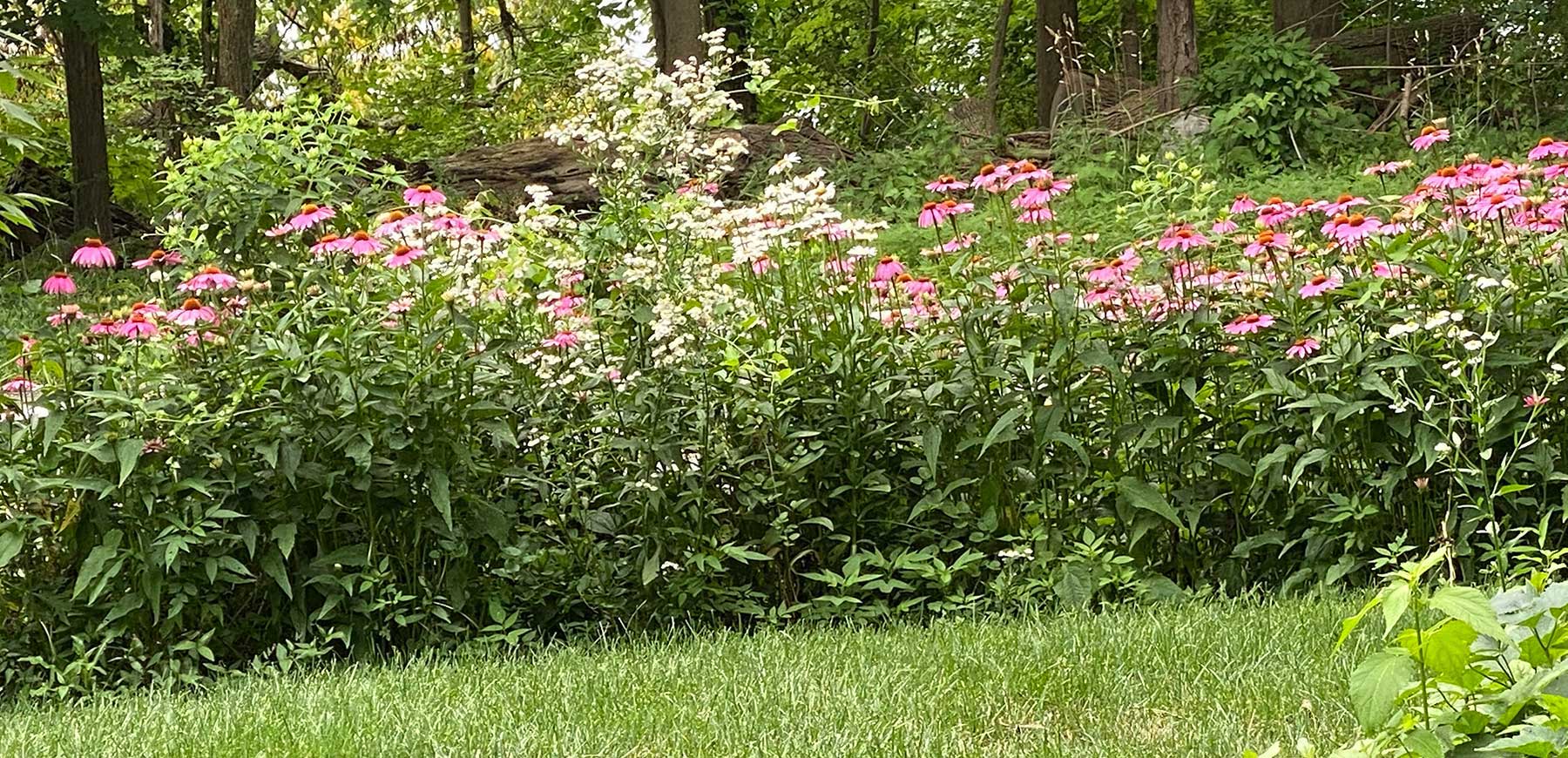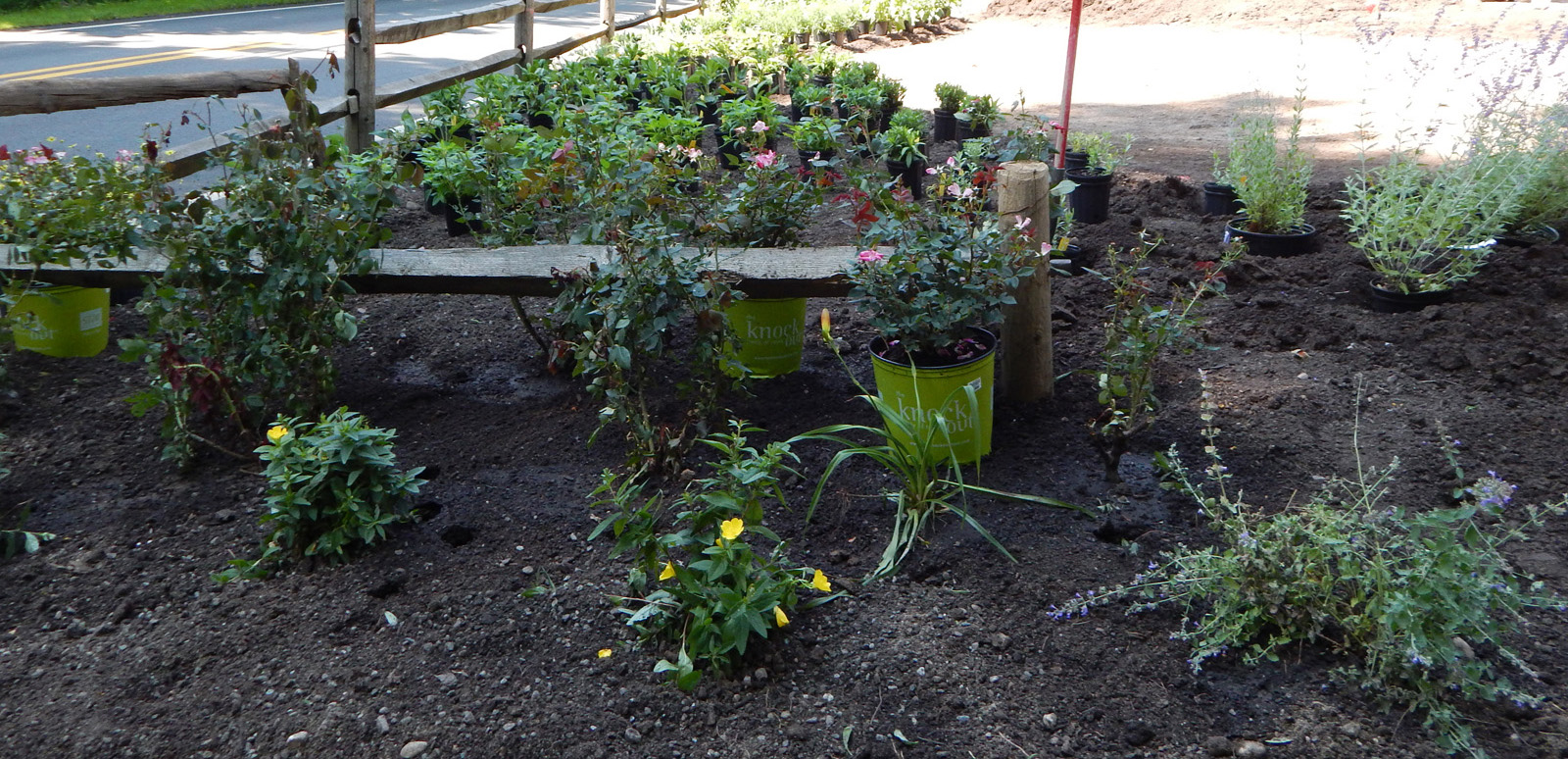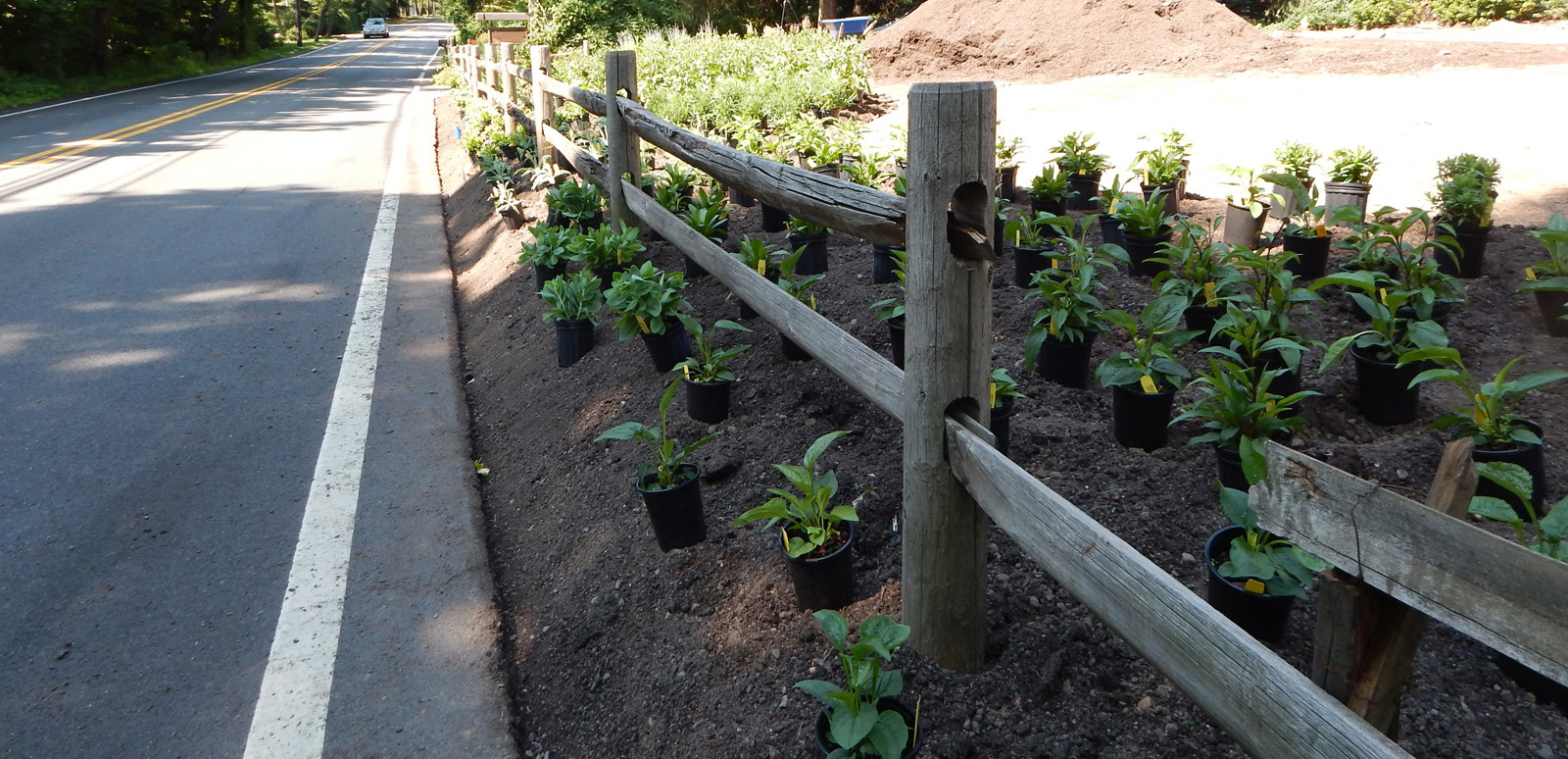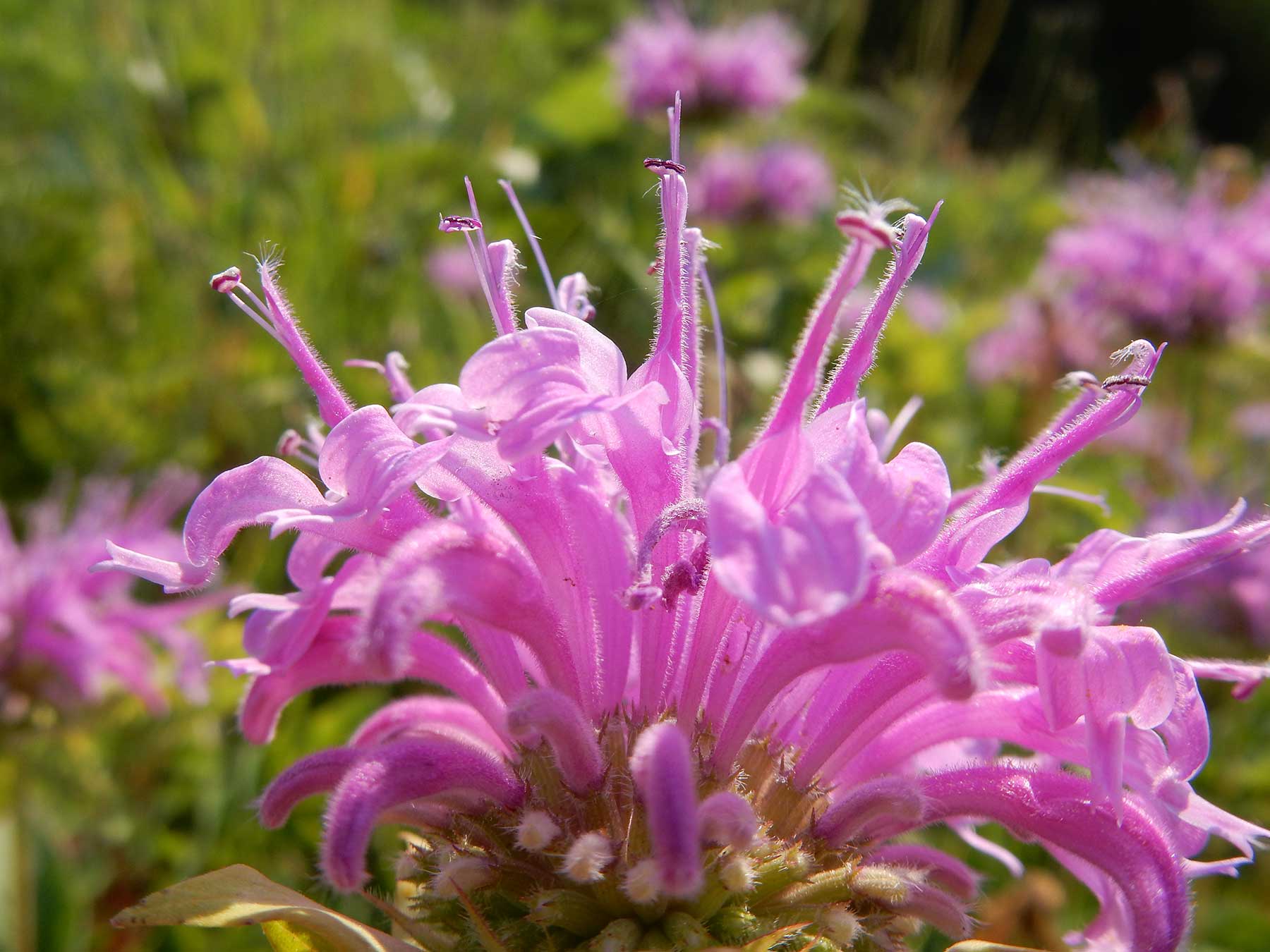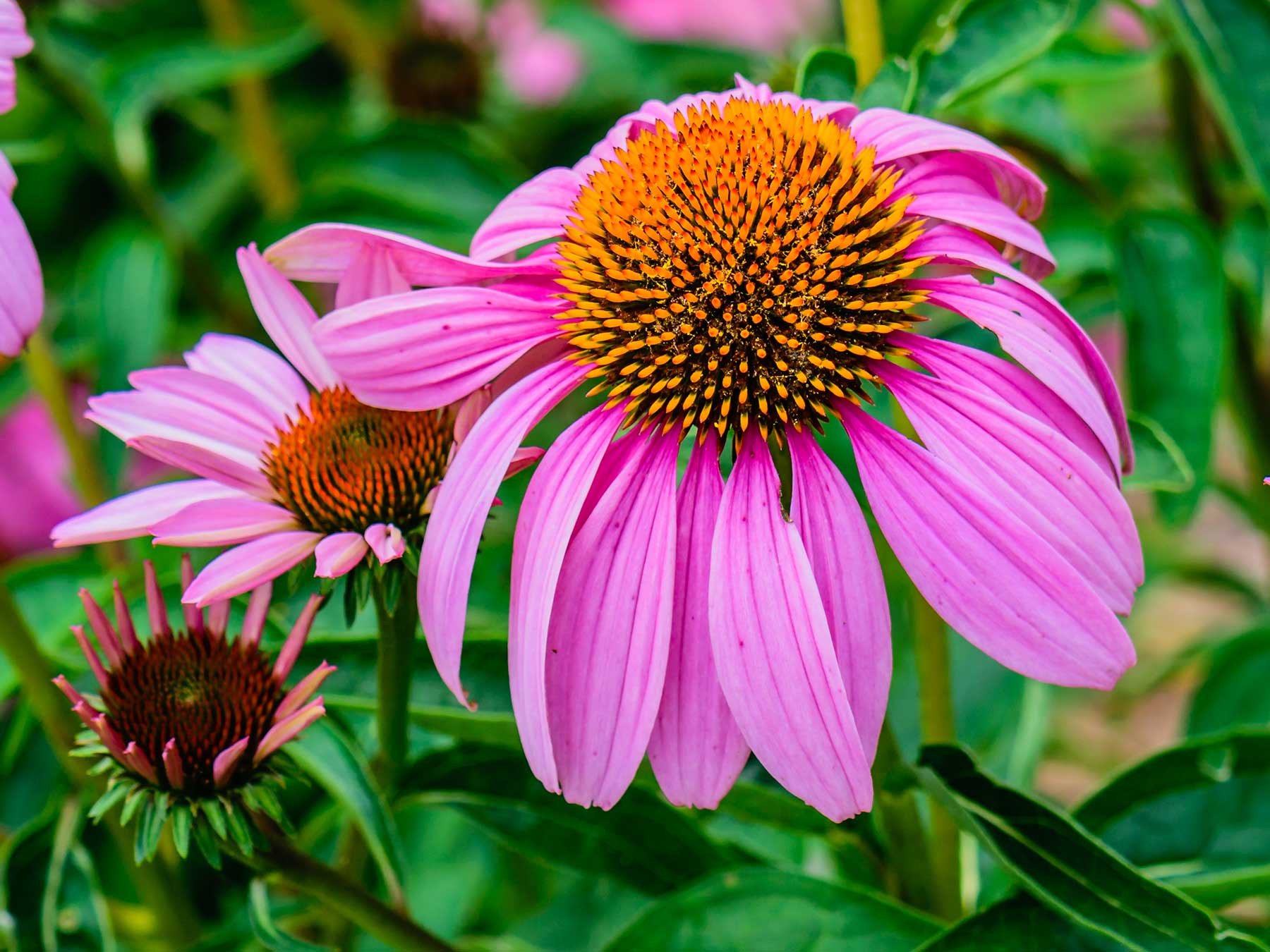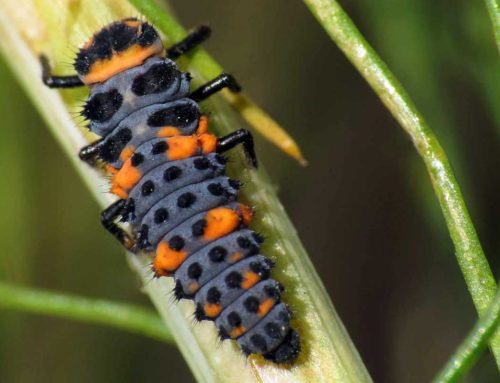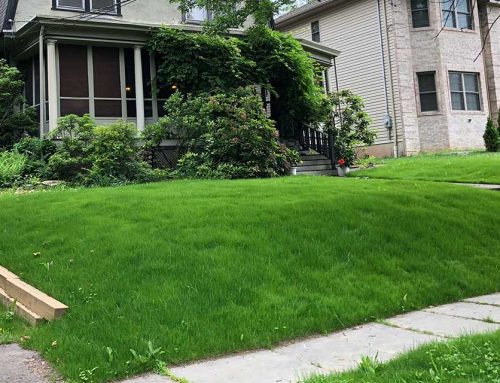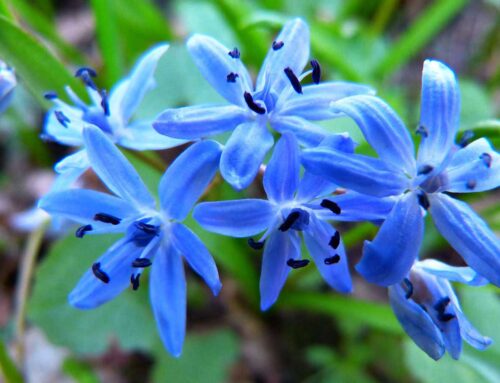Companion Perennial Planting
Two years ago we completed a makeover of a residential property in Franklin Lakes. A septic issue mandated removal of a large portion of the front yard area, the resodding of the lawn area and the implementation of a native plantings within the new beds. The layout of the property provided a long expansive full sun bed that flowed into a wooded shady bed that arced to the rear of the property. It was along this fence line in the full sun that we planted Echinacea Purple Coneflower and Monarda Fistulosa Bee Balm in masses along with other native plants. The result (as seen above) is a spectacular showcase of Mother Nature’s Splendor through the implementation of native perennial companion plants. As can be seen below, the original perennial planting filled this bed nicely with native pollinator plants.
Sustainable Gardening with Native Plants
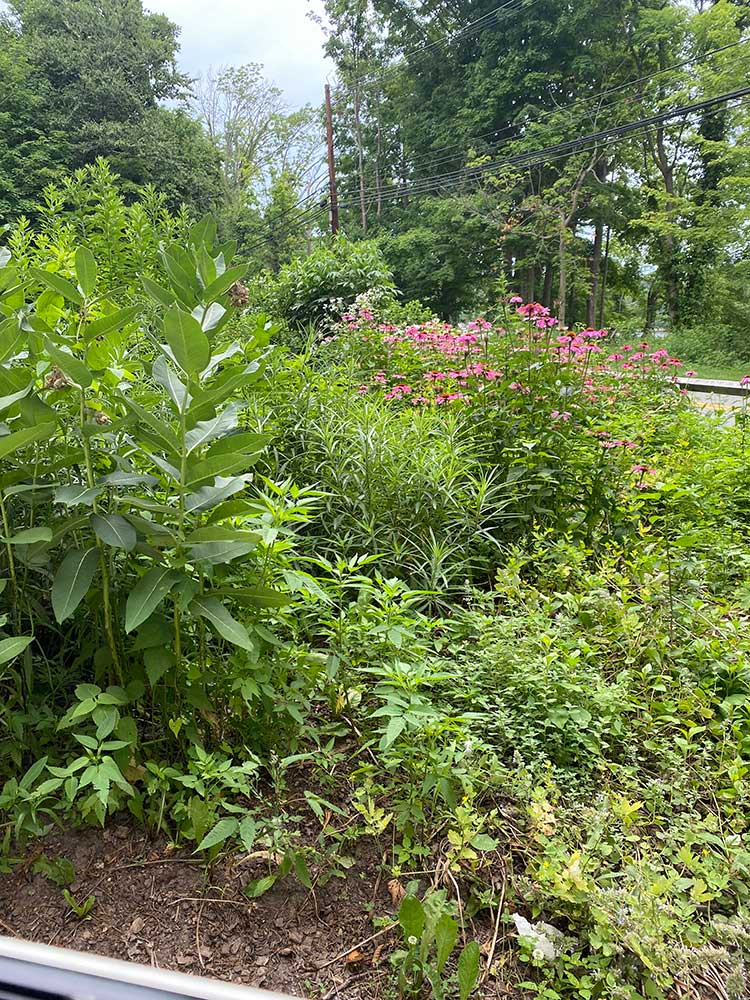 As with any form of companion planting, doing so with native plants focuses on the idea of beneficial diversity in a sustainable garden. There are numerous benefits native plant companions can provide:
As with any form of companion planting, doing so with native plants focuses on the idea of beneficial diversity in a sustainable garden. There are numerous benefits native plant companions can provide:
Preventing diseases through diversity is of immense benefit. In a monoculture, where many of the same type of plants are planted together, pests can easily spread from one plant to the next. Mixing with companion plants can interrupt this cycle of spread.
The benefits are realized when companion plants provide a desirable environment for beneficial insects and other arthropods such as predatory beetles and parasitic wasp species. These beneficial insects can help keep pest populations under control, they help in repelling insects, pathogenic fungi and nematodes through the release of chemicals. Plants that produce copious nectar or pollen can attract larger quantities of beneficial insects that control pests and increase yield. It is important to avoid planting together plants that are susceptible to the same insect species or diseases.
Monarda fistulosa |Echinacea purpurea
Monarda fistulosa, commonly called Bee Balm, is a clump-forming perennial and a member of the mint family member that grows typically to 2-4′ tall. Lavender, two-lipped, tubular flowers appear in dense, globular, solitary, terminal heads atop square stems. In summer, plants are topped by showy rounded clusters of fragrant lavender tubular flowers. Each flower head is subtended by showy, pinkish, leafy bracts. Because of their lengthy bloom time, their flowers are attractive to bees and butterflies and other pollinators.
The nectar of the flowers attracts long-tongued bees, bee flies, butterflies, skippers, and hummingbird moths. Among the long-tongued bees, are such visitors as bumblebees, Miner bees, Epeoline Cuckoo bees, and large Leaf-Cutting bees. A small black bee (Dufourea monardae) specializes in the pollination of Monarda flowers. Sometimes Halictid bees collect pollen, while some wasps steal nectar by perforating the nectar tube. The Ruby-Throated Hummingbird also visits the flowers. The caterpillars of the moths Sphinx eremitus (Hermit Sphinx) and Agriopodes teratophora (Gray Marvel) feed on the foliage. A seed bug (Ortholomus scolopax) is sometimes found in the flowerheads.
Echinacea, or purple coneflower, is an outstanding perennial that is drought tolerant, it can thrive on neglect. These cheery pinkish-purple flowers can grow up to 3 feet in height with a similar spread. They attract pollinators and add statuesque color to any perennial flower garden.
Echinacea erupt with a rayed flower that spans 2 to 4 inches in width. Echinacea Coneflower is native to the central and eastern parts of North America. These easy bloomers are hardy to United States Department of Agriculture zones 3 to 9. Native plants are perfect for the perennial garden. Because they are native, they are very adaptable to the existing conditions and do not require as much care as introduced species. The flowers of Echinacea species are used to make an extremely popular herbal tea, purported to help strengthen the immune system; an extract is also available in tablet or liquid form in pharmacies and health food stores.
Companion plants for Echinacea should have similar cultural requirements and benefits. To create a lively color bed, choose Echinacea companions that offer dimension as well as tones and textures that set off these stoic beauties.
We chose to plant these native perennials because of their compatibility with each other. Both have almost identical growing requirements as per soil mediums, watering and sunlight requirements, their drought tolerance and the close CaCO3 Tolerances they share. Calcium carbonate is an important trace element for plants. It can help the soil convert nutrients into a more usable form. Upon providing them with an excellent organic growing medium, we then implemented a fertilization schedule utilizing our own Compost Tea. Compost tea is a fantastic way to protect plants with a cover of beneficial microorganisms and feed the roots as an organic fertilizer. Compost tea is a mixture of nutrients and oxygen-loving (aerobic) bacteria, fungi, nematodes and other microbes that live in finished compost. For more information about our compost tea we have provided a link below.
Need some help implementing or getting started with organic lawn and gardening? Give us a shout and we can help you. At Lincoln Landscaping cultivating the environment is our life and livelihood. It is our number one goal to help our clients create and maintain beautiful landscapes while reducing the impact on the environment. Whether you are interested in a pollinator landscape garden design and build or other landscaping or property management project; we can create for you an environmentally friendly, organic and beautiful property.
Together with you, we create sustainable Eco-Systems. As the Navajo Indians would say “Yua Tah Hey”
More excellent choices for learning about Sustainability are available on our “food for thought” page.
Lincoln Landscaping “The Natural Choice”
Mike Kolenut President & CEO
https://lincolnlandscapinginc.com
(201) 848-9699

